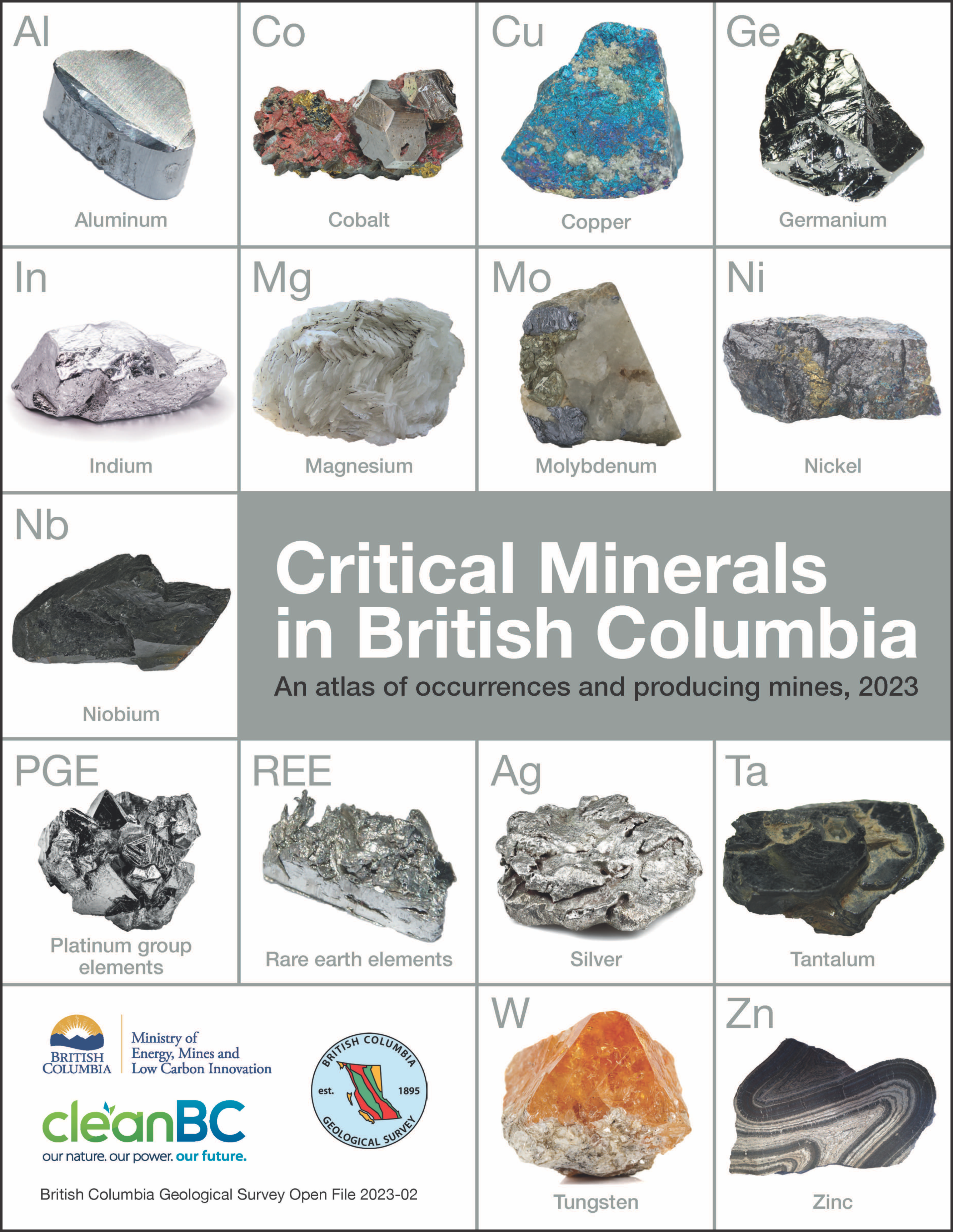Critical minerals strategy in B.C.
Low-carbon technologies demand critical minerals. However, with increased global demand, long-term shortages are predicted. British Columbia is developing a critical minerals strategy to help mitigate climate change, grow the provincial economy, and ensure resilient supply chains to partner nations.
British Columbia is developing a critical minerals strategy
Mineral exploration and mining are foundational to B.C.’s economy, particularly in rural and remote communities, and this contribution could grow substantially through critical mineral development.
In 2023, the sector:
- Represented around $16.4 billion in estimated production value and $643.5 million in exploration expenditures
- Employed over 35,000 workers
- Contributed $7.5 billion (approximately 2.5%) to the provincial gross domestic product; more than any other natural resource sector
A Critical Minerals Strategy will help B.C. to build on our strengths and capitalize on the critical mineral-intensive global transition to a clean economy. With B.C.’s strong geological potential, solid environmental, social, and governance (ESG) performance of the mining sector, and leading innovators, there is an opportunity to significantly expand and strengthen B.C.’s critical minerals value chain activities, from exploration to recycling. This is a generational opportunity to create good jobs across the province, contribute to economic reconciliation and drive economic growth in partnership with First Nations.
More information
The Government of Canada released the national critical minerals list and the Canadian Critical Minerals Strategy. An objective of the national strategy is to encourage investment in critical minerals and build a sustainable industrial base that strengthens economies while combating climate change and supporting emission reductions.
British Columbia is presented with a generational opportunity to:
- Support the low-carbon transition
- Grow the provincial economy
- Diversify global supply chains
- Continue as a preferred supplier for partner nations

The Ministry of Energy, Mines and Low Carbon Innovation has released Phase 1 of the Critical Minerals Strategy.
What are critical minerals?
Critical minerals
- Critical minerals are minerals such as copper, nickel, and molybdenum
- They are essential components in products used for clean energy, digital technology, telecommunications, healthcare, and other applications
- Critical minerals are used to manufacture electric vehicles, solar panels, wind turbines, electrical transmission lines, batteries, mobile phones, and medical devices
- Critical minerals are defined by different groups for different purposes
- Criticality is informed by importance to the global energy transition, supply constraints, geopolitical risks and economic importance. Different jurisdictions have different critical minerals lists
- Typically, critical minerals serve an essential purpose (e.g., national security, economic health) and may be at risk of supply disruption
Common uses of critical minerals in low carbon technologies

Canada's critical minerals list
The Government of Canada has developed a list of critical minerals considered essential for the sustainable economic success of Canada and its trading partners.
Critical minerals office
Visit the Critical Minerals Office for more information on how British Columbia is supporting critical minerals project advancement.
The British Columbia Critical Minerals Atlas
- British Columbia can contribute many of the critical minerals that are projected to rapidly increase in demand due to the transition to a clean economy
- The B.C. Critical Minerals Atlas evaluates B.C.’s critical mineral endowment. It also builds awareness about critical minerals opportunities for industry, First Nations and the public
- The Atlas was developed by the B.C. Geological Survey. It contributes to British Columbia’s CleanBC Road map to 2030
- The B.C. Geological Survey provides accessible geoscience expertise, evolving knowledge, new technology, and comprehensive public geoscience data. It benefits land use planning and governance, societal development, low-carbon innovation, economic opportunity, education services, and Indigenous reconciliation in British Columbia
- With increased global demand, long-term critical mineral shortages are predicted. Jurisdictions around the world are developing strategies to ensure supply chains are robust and resilient
Technical information and publications about critical minerals
Visit the BC Geological Survey Critical Minerals page.
Engagement
First Nations perspectives are essential for the development of B.C.’s Critical Minerals Strategy. The Province continues to seek ideas and feedback from First Nations.
In October 2023, the Ministry of Energy, Mines and Low Carbon Innovation sent letters to all First Nations with an opportunity to engage in government-to-government discussions to solicit First Nations ideas and thoughts on B.C.’s Critical Minerals Strategy. At the same time the Ministry acknowledges that each community’s desire and readiness may differ with respect to engaging on this topic, at this time.
For First Nations interested in finding out more, having a discussion or engaging in another fashion, please contact the Ministry’s Critical Minerals secretariat via email at FirstNationsCriticalMinerals@gov.bc.ca, or by mail to the following address:
Ministry of Energy, Mines and Low Carbon Innovation
Responsible Mining and Competitiveness Division
Policy and Competitiveness Branch
6 – 1810 Blanshard Street
PO Box 9320 STN PROV GOVT
Victoria, BC V8T 4J1
The Critical Minerals Advisory Committee was created to inform the Strategy. It had membership from First Nations, the mining industry and downstream value-chain, Academia and Innovation sectors, organized labour, an environmental non-government organization, and the financial sectors.
The Ministry held public engagement to inform development of the B.C. Critical Minerals Strategy in Fall 2023.
The Province has established a Critical Minerals Advisory Committee to help inform the development and implementation of the B.C. Critical Minerals Strategy. The Committee has membership from First Nations organizations, the exploration, mining and critical minerals industries, academia, organized labour, an environmental non-government organization, and the innovation and financial sectors.
Contact us
Please send your feedback to critical.minerals@gov.bc.ca

